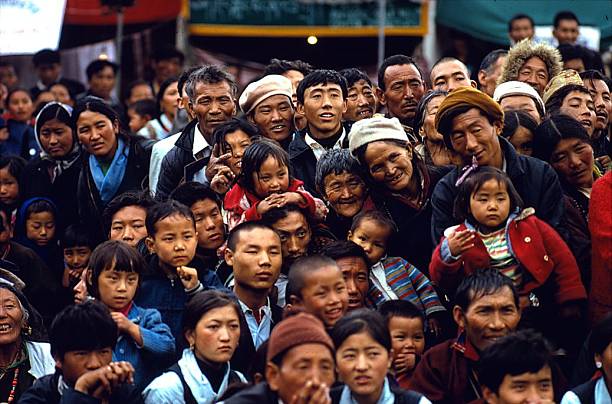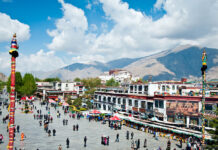
(TibetanReview.net, Sep12, 2018) – The number of Tibetan ‘refugees’ living in India, always estimated in recent years to be well over 100,000 – in fact, as much as 150,000 – turns out to be likely to be only about 85,000 in reality. According to government’s advisor on Tibet Affairs, Mr Amitabh Mathur, this is because a large number of them had either migrated to the US or returned to China/Tibet.
“Their numbers could be approximately 85,000, but we will get the exact figure once all of them are registered online. In the past two years, the government has simplified the process and made everything accessible on the internet,” the indianexpress.com Sep 11 quoted Mathur as saying.
Mathur, former head of Aviation Research Centre, a unit of India’s external intelligence body RAW (Research and Analysis Wing), was appointed as an interlocutor on Tibet affairs, a major stumbling block for India-China relations, three years ago. His term will reportedly end on Sep 21.
The report noted that as per a 2011 reply by then Minister of State (Home) M Ramachandran before Parliament, the number of Tibetan refugees staying in 45 settlement camps across “the country was 1.5 lakh”. The fall in numbers, the report cited officials as saying, could be due to various factors including absence of a national refugee policy.
“Tibetans are recognised as ‘foreigners’, not refugees, because of which they cannot own any property here, neither can they apply for government jobs. After 2014, only qualified professionals from among the Tibetan refugees are permitted to take jobs in private and non-government sectors,” the report quoted a Minister of Home Affairs (MHA) official as saying.
The MHA’s 2009 figures were reported to show that the major concentrations of Tibetan refugees were in Karnataka (44,468), Himachal Pradesh (21,980), Arunachal Pradesh (7,530), Uttarakhand (8,545), West Bengal (5,785) and Jammu and Kashmir (6,920).
Mathur has explained that the government had introduced measures to “smoothen” the stay of Tibetans in India. “Tibetan migrants who are registered online are granted residential certificate for 5 years and such certificates may be renewed for five years on each occasion as and when applicable. For visits abroad, one-year multiple entry return visa is being issued by FRRO. In case migrants are shifting, they may intimate online, avoiding the need for visits to the centre and delays in manual transfer of registration.”
If they become Indian citizens, they will not be entitled to benefits of relief and rehabilitation,” he has explained when asked about Tibetans who had been granted Indian passports on court orders.
According to Mr Sonam Dagpo, a spokesperson for the Central Tibetan Administration (CTA), “The number of Tibetans going abroad has increased. The birth rate among Tibetans (in India) has also declined. However, Tibetans in exile in India are close to 1 lakh. Those who may have taken Indian citizenship may be less than 100 in number.”
Through active, even collaborative measures on occasions, both the CTA and the government of India ‘discourage’ eligible Tibetans from asserting their Indian citizenship despite several court rulings. This drives many Tibetans to leave the country, often by desperate means, to seek residence in Western countries where they can hope to get legal status and, with it, opportunities for a better life.





